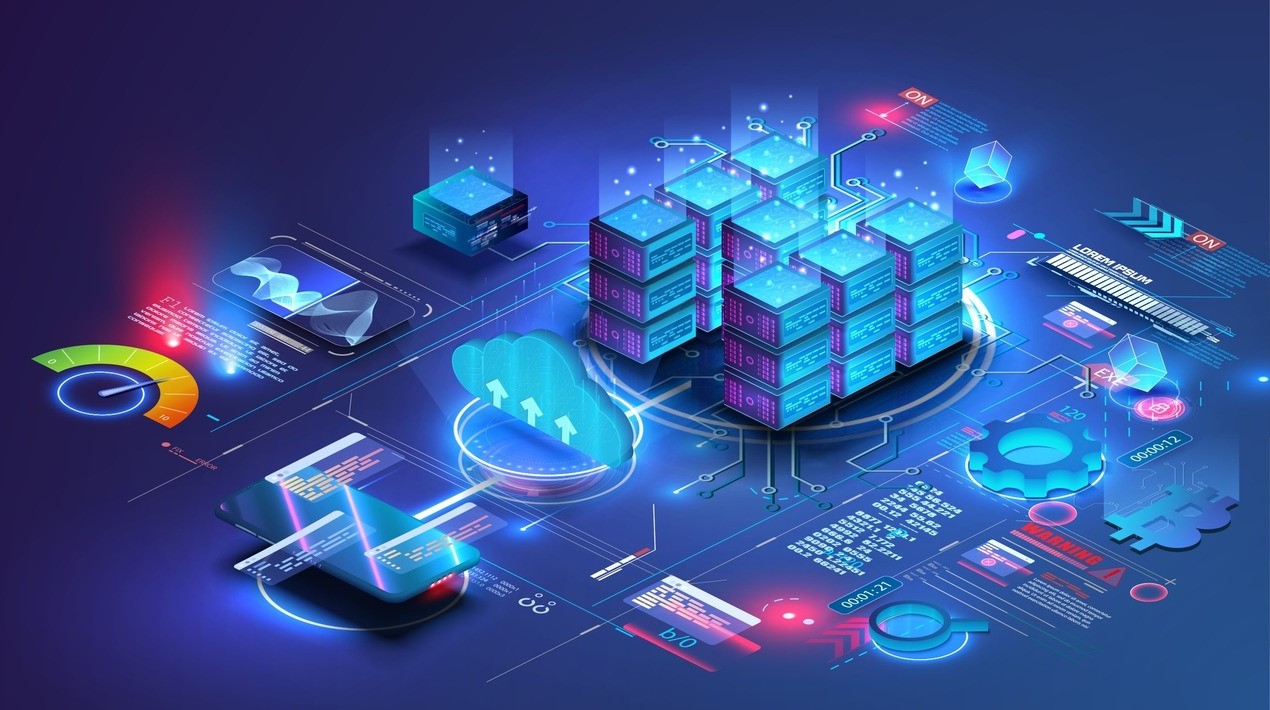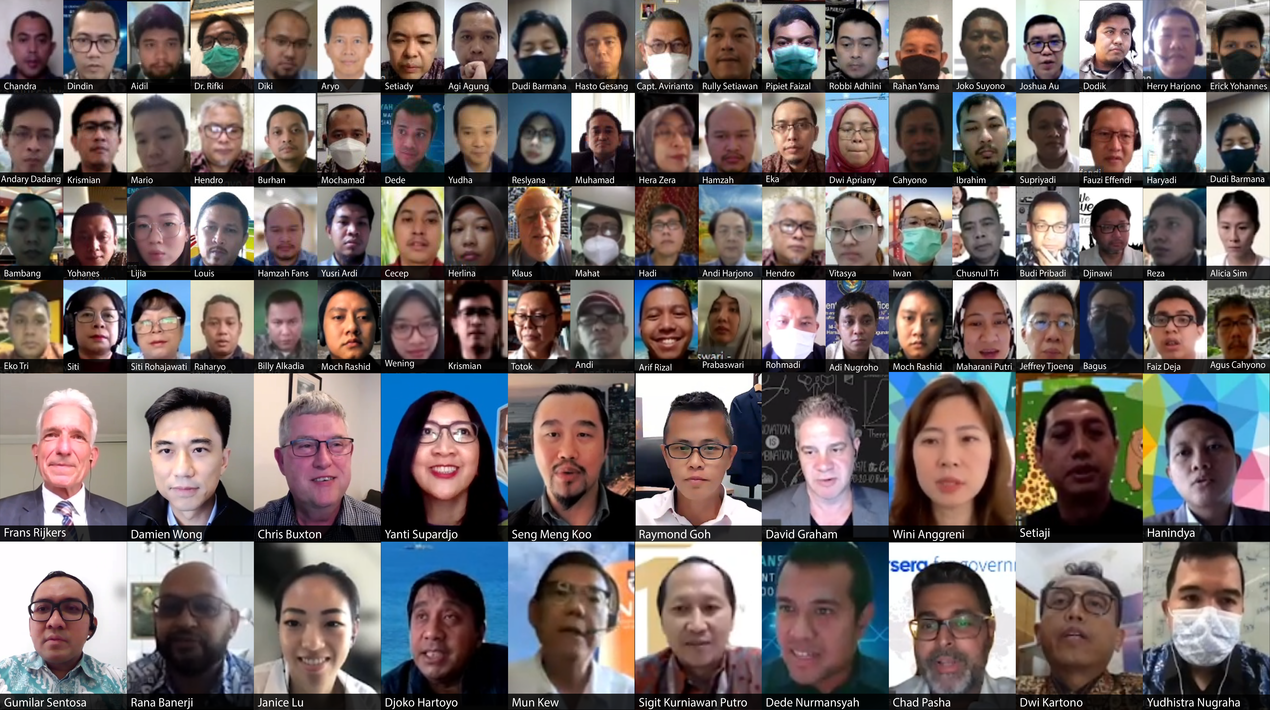
Digital transformation is all about people, processes and technology and the Indonesian government has been ramping up digital services to its citizens in the post-COVID-19 era. The Indonesian government has been focusing on improving its Information Technology infrastructure over the past few years and involving citizens is another critical part of its digital transformation strategy. While digital transformation ensures delivering outstanding digital customer service, creating a digital-native nation will be the ultimate goal for the nation.
This was the focal point of the discussion during the Indonesia OpenGov Leadership Forum 2021 – Virtual Edition, which brought key decision-makers and influencers from the country together in one forum. The forum brings the crème de la crème of technology leaders together for a strategic level discussion on the issues that matter the most.
Indonesia OpenGov Leadership Forum – Virtual Edition is an effective platform that helps the public and private sectors to break down barriers, collaborate and work together for better outcomes for citizens. For the past few years, OpenGov has consistently gathered over 200 top decision-makers and government officials to interact with international counterparts to discuss key issues relating to digital transformation.
The Indonesia OpenGov Leadership Forum offers a unique and unparalleled platform of immense learning and sharing. OpenGov Asia’s award-winning OpenGov Gamification Table (OGT) format which is now taking place virtually – OpenGov Gamification Virtual Room (OGVR), allows for intimate interaction with delegates, from key government agencies and FSI organisations to discuss areas of common concern.
Every OpenGov Gamification Virtual Room (OGVR) showcased a gamified VR experience where delegates get to learn by doing virtually, allowing them to discuss, share and learn just as they would in the physical world. Every activity and facet of the event is designed for deep-dive discussion, learning, collaboration and gain exclusive insights from the brightest digital leaders.
Digital Transformation in The New Normal

To kickstart the session, Mohit Sagar, Group Managing Director and Editor-in-Chief at OpenGov Asia delivered the opening remarks.
Long before the pandemic, he opined, there was agreement on the benefits of remote working and talks on how to bring this about effectively and securely – but it did not happen in any significant way. The COVID-19 pandemic created a massive paradigm shift in thinking across the board, forcing people to work from home and driving life predominantly online. Demands from the public sector, healthcare, education and the financial services industry increased astronomically significantly.
While the adoption of different technologies significantly increased during the COVID-19 pandemic, the solutions cannot be termed digital transformation as organisations, for the most part, deployed band-aid technologies and ad-hoc platforms to stay afloat.
In the early stages, people were excited at the opportunity to work from home; a cultural shift that had been in the offing for a while. Interestingly though, the step was considered a “pivot” – with the connotation of reaction rather than proactive. People and organisations were said to be “pivoting” to manage and mitigate the issues the pandemic brought.
As the initial euphoria of remote working wears thin, people, once happy about the shift, realise that the new normal disrupts their way of life, schedules and well-being. The work-life balance has shifted dramatically and the current model has overwhelmed people.
The pandemic certainly accelerated certain aspects that used to be good to have, but now they become necessary – albeit difficult, complex and continuously changing. So the question, Mohit asks, is will organisations continue their digital transformation in the post-pandemic era or they will go back to their traditional ways.
In this environment, the key question is who is going to stand out and how do both public and private sectors keep themselves relevant. Changing the status quo requires genuine digital transformation and innovation, not temporary tech solutions.
The fact is, all organisations must rise to the occasion and focus on what solutions they deploy. The deployment of Artificial Intelligence is still in its infancy and its capability is still limited. Currently, cloud technology is a massive requirement for many organisations, data analytics is a key to decision making and security is paramount.
In all this, Mohit then highlights, the importance of leadership cannot be overemphasised – and it has to permeate all levels of an organisation. Leadership must be made an integral part of an organisation’s culture, utilising technology as necessary and appropriate.
For a successful transition, Mohit stressed the importance of collaboration in securing and recovering data. Finding the right partners is paramount in recovering organisations’ critical data. Having competent experts who can focus on the data protection, data recovery and compliance needs against ransomware threats, allows businesses to focus on their main tasks and key deliverables.
Embedding Innovation at All Levels to Create the Cities and Nations of the Future
 After Mohit’s opening remarks, the forum heard from David Graham, Chief Innovation Officer, City of Carlsbad on cutting-edge technologies used as solutions for various city problems during the pandemic.
After Mohit’s opening remarks, the forum heard from David Graham, Chief Innovation Officer, City of Carlsbad on cutting-edge technologies used as solutions for various city problems during the pandemic.
David focuses on achieving the best results for citizens and businesses through adopting digital technologies. However, public perception of technology is one of the main challenges in getting maximum results.
Although Carlsbad is a small city, it is a global leader in the smart city space. Carlsbad is a fascinating urban setting because of its long history of agility in adapting to change.
A survey on trust in technology during the COVID-19 pandemic showed that 61% agreed that the pace of technology change was too fast. Just over two-thirds (66%) worried of technology would make it impossible to know what people actually see or hear. About 61% thought that the government did not understand emerging technologies enough to regulate them effectively while 66% were not convinced that their societal leaders would be able to successfully address the country’s challenges.
Before the pandemic, government agencies and companies did not expect such rapid digital transformation. David acknowledged that the pandemic magnified the innovation of digital technologies in an unprecedented way. it disrupted the normal management style and at the same time offered novel opportunities. Governments found they could work virtually, deliver citizen services via tech and deploy a slew of online tools. All in all, the pandemic accelerated and promoted change.
With innovation ramping up during the crisis, it impacted residents, visitors, businesses and government. There was a need for rapid adaptation of new technologies to deliver services as the way work got done changed. New ways to engage with the public needed to be discovered and deployed – ones that could be moved from temporary to long-term. Insights that contribute to continuous improvement and advanced data-driven decision making had to be obtained. To summarise, innovation principles to get the job done had to be learned.
Carlsbad was able to discover efficiencies in virtual solutions across the world for its communications infrastructure challenges. They determined that data was crucial to make sure to get more information from residents and employees as well as push more information out and down to them to drive behavioural change. Moreover, Carlsbad could break through traditional organisational barriers and decentralise situational awareness sourcing and distribution.
The city council continued its analysis of the effects of the pandemic by issuing an updated survey of Carlsbad businesses during COVID-19, data collection and analysis of changing business needs and financial assistance that needs re-assessment. The council provided rapid lifelines to local businesses like a COVID-19 restaurant map that connects residents with safe dining locations, information on food delivery/takeout options, that are accessible on a phone, tablet or computer.
Organisations need to expect the unexpected by embedding innovations across the entire organisation. David strongly believes that in an organisation, innovation cannot be reserved for the few, but it must be for all – everyone has to innovate at some point.
Leveraging Innovative Technologies to Respond, Recover and Reimagine Next-gen Citizen / Customer-centric Services

The forum next moved to a presentation from Kenneth Koh, Head of Industry Consulting Asia Pacific at SAS who spoke about building strategic capabilities in data and as well as citizen/customer-centric services.
The COVID-19 pandemic brought a plethora of changes in the way organisations operate. Digital technology got ramped up in both the public and private sectors. SAS has supported this acceleration of digital transformation activities such as digital prospecting and retention management. They have also managed the influx of communication on enquiries and servicing, ensuring the right division responds promptly.
Another area that SAS covered is cost reduction, an issue that highly impacts the insurance segment. As a result of the pandemic, there the sector has seen a sharp increase in incidents of opportunistic insurance claims, for the most part, fraudulent.
SAS solution assessed the nature and types of claims or treatments and identified the amount of loss reserving and potential incidence of fraud, waste and abuse. For automation and optimisation, it offers a SAS cloud-based solution and service delivery models such as hosted services.
Although the pandemic had many negative consequences, it also brought positive changes to organisations. These are four catalysts for change to organisations:
- Products and Services: Increase in life and health products and access to virtual healthcare services and priority access to healthcare providers
- Personalisation and Digitisation: Personalised offering and communications. Streamline, improve and digitalise operations, sales/ marketing and services
- Data Exchange via Contact Tracing: Individuals may be more willing to provide data. Organisations can unbundle, differentiate the risk and price accordingly
- Distribution Digitalisation: Digital signatures, digital marketing, and digital prospecting
As organisations move to more citizen-centric services, accelerating citizen engagement with analytics requires listening to people, understanding them and connecting more personally. Based on the insights from demographic, contextual and text analysis, organisations need to understand emerging citizen topics and identify sentiments of the local community.
To create sufficient and beneficial citizen-centric services, organisations must engage the citizens through the right channels. Organisations must respond to public feedback and develop citizen interaction through creating an enduring message that addresses issues.
In driving citizen engagement, government agencies need groups of support to connect, collaborate and coordinate with. Creating the best citizen experience requires data management and advanced analytics to make informed decisions to general beneficial applications and channels.
In closing, Kenneth said that in Indonesia many organisations are already in the phase of data mining and predictive modelling in the roadmap to citizen centricity experience. The next step is to leverage the insights to create Next Best services and resolution on the web and present the most compelling services during their patronisation based on analytics on a real-time inbound basis across digital channels.
Smarter, Safer and Resilient Cities: Re-opening Our Cities in the Face of COVID-19
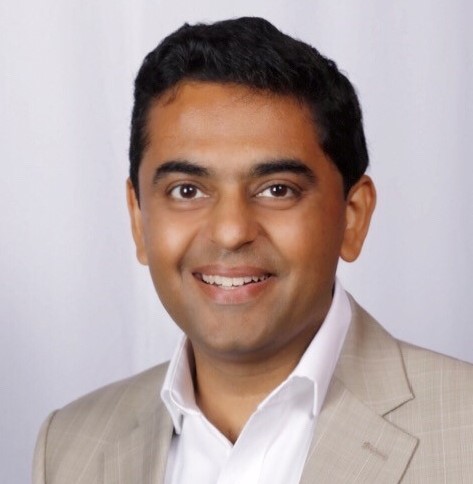
The delegates next heard from Sameer Sharma, Global General Manager Smart Cities, Intelligent Transportation & IoT, Intel Corporation. He talked about how the Internet of Things and Data can be leveraged to monitor, alert and protect citizens in modern cities as they begin to re-open.
Data clearly shows there is an explosion in populations in major cities all over the world – 55% of the world’s population lives in cities and this is expected to grow to 68% by 2050. With this surge, governments have been striving to find ways to make urban systems and infrastructure more efficient and effective. However, with COVID-19 hitting the world at the end of 2019 Q4, it has created a major pause in city innovation in specific areas.
The rapid spread of the virus affected countries globally on a massive scale. It severely hit areas like trade where the value of global exports increased by 4,000% in the last century; the travel industry where 4.5 billion passengers boarded flights in 2019 pre-COVID. And on a personal level, human interaction was significantly reduced by the pandemic.
The pandemic made governments and policymakers relook at their vision for cities – better access to education, innovative healthcare and more opportunities for their citizens – in a whole new light.
All of these must be and can be managed even in an ongoing crisis. Improving and strengthening cities where the working society is in will be the key and, in the age of COVID-19, Sameer is convinced, that resilience will be critical; new threats and challenges must be anticipated and planned for.
Agencies and organisations across the board have tried to mitigate the effects of the pandemic by using technologies and new operational frameworks. Sameer reminded the delegates that legacy infrastructure cannot scale but disruptive technologies can make everything possible. Digital technologies must overlay the physical world, especially in cities.
COVID-19 created shifted the focus from specific sector improvement to overall infrastructure up-gradation – that is, transforming ‘spaces’ to ‘smart spaces. It is imperative to learn how to adopt technologies like AI, Cloud, 5G and IoT.
With the re-opening of the economy, safety and sanitisation will take precedence. Automated air filtration systems will be the norm in offices, commercial spaces, and industries where the physical presence of people is a must.
Organisations that use these spaces can utilise technology to upgrade their infrastructure. There are a plethora of tech-based solutions that enable smarter spaces: automated room access, keyless and touchless entry, touchless and on-demand elevators, ambient temperature control, fresh air circulation and quality monitoring, UVD disinfecting robotics, face mask and fever detection using AI, people-counting and spacing-analytics and digital contact tracing initiatives just to name a few.
With fears of the virus in public transport, for local, shorter commutes, most likely, people will use personal vehicles. Where longer travel is necessary by air, road, rail or sea, security agencies will add healthcare checks and screenings.
Schools and universities will opt to use online tools; hotels and restaurants will transition to digital menus, delivery models and contactless payments; retail will be increasingly driven online.
Intel’s Smart City Vision, Sameer shared, is built on effective policies, governance and financing. Transportation, buildings and energy, environment, healthcare, public services and homes stress citizen wellbeing and safety. Intel is a strong advocate for and champions the use of sensors and edge computing, wireless tech, access and core networks, cloud and analytics and AI and Automation to achieve their dreams of a Smart City.
Nations must understand that resiliency is the key and technology enables it. Decision-makers should think big – not just be thinking about smarter cities, but better cities. The mantra is to start small and get going with obvious projects and opportunities; then learn, adjust and iterate.
Sameer urges governments and organisations to find the right partners across the industry to build sustainable cities for citizens.
In closing, he quoted Nelson Mandela, “It always seems impossible until it’s done”.
Unleash Tech Innovation: Upskill to Build a Data-Driven, Digitally-Fluent Workforce
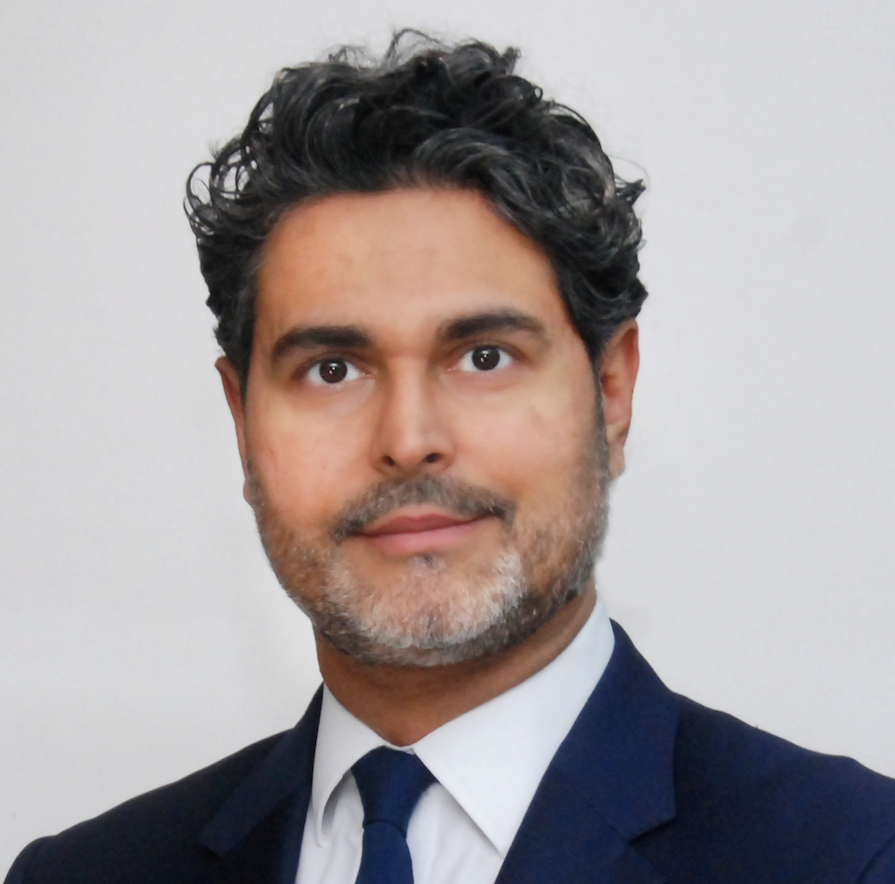
Chad Pasha Senior Advisor for Global Government Partnerships at Coursera was the next presenter. He talked about Coursera’s approach to upskilling globally and across the regions.
Coursera is the largest online learning provider that offers more than 80,000 skills with 82 million learners. Coursera has partnered with more than 50 industries and 150 universities. The people that consume Coursera’s content are from all walks of life – businesses, governments and campuses.
Due to the pandemic, technological change is outpacing human adaptability. Hence, Coursera’s mission is to be at the centre of adaptability challenges. Chad explained that data is the key as it unlocks three things:
- Better and Faster Decisions: Data as the common language supports high-quality decisions at all levels
- Revenue Growth: Find and delight customers more efficiently
- Improved Margins: Delivering products and services with higher quality and lower cost
Coursera focuses on developing a modern workforce with digital skills, reducing youth unemployment, increasing overall labour force participation, and reducing income inequality. Coursera offers world-class content and credentials from top universities and companies.
Building a new upskilling ecosystem is challenging due to radical change of workforces in the world. According to World Economic Forum, there will be difficult transitions for millions of workers and the need for proactive investment in developing a new surge of agile learners and skilled talent globally. About 1.1 billion jobs will be radically transformed and people 300 million people will enter the workforce in the next decade, most of them are underprepared.
Low-skilled jobs are at risk of automation and the pandemic accelerated the replacement. So Coursera aims to create knowledge centres to upskill employees on a particular digital skill to make them more resilient to change.
In a government space, Coursera upskills government employees by providing critical skills like big data, AI, cloud computing, and cybersecurity. The courses are customised to align with the organisation’s goals and needs. Coursera tracks and measures skills against the organisation’s targets and industry benchmarks.
In closing, Chad stressed the need for metrics to identify success for the learners which include the development of skills, number of jobs obtained and income levels.
Digital Identity in the Blockchain Era – Creating a ‘Self-Sovereign’ Digital Identity

The delegates next heard from Frans Rijkers, Strategic Advisor, Innovation and Identity, National Office for Identity Data, The Netherlands who talked about creating self-sovereign digital identity in the blockchain era.
He affirmed that all relevant verifiable and personalised credentials such as ID cards, bank details, employee ID and even concert tickets should be available to the user digitally, e.g., in a wallet.
Keeping with this, the Netherlands’ “NL Digibetter” Government Agenda aims to increase the autonomy of individual citizens and entrepreneurs. It intends to create one central place in which citizens and entrepreneurs can meet government and institutions to deal with those issues that relate to them personally.
The many possibilities include altering citizen’s data, gaining access to any data that is recorded about the user, granting consent for the use of personal data, and managing the citizen’s digital login facilities.
The government’s digital agenda consists of:
- Investing in innovation
- Protecting fundamental rights and public values
- Accessible, understandable and intended for everyone
- Making citizen services more personal
- Getting ready for the future (annual review of digital agenda)
In this Digital Government Agenda, the needs and rights of citizens and entrepreneurs will be the central point of focus, alongside the social challenges – for example, in the fields of security and healthcare. It will be realistic and will work at a pace that matches the speed of modern developments.
The complexity of the issues calls for all of the government to act jointly and with clear leadership in taking responsibility to tackle those challenges. Digitalisation is more than day-to-day practice: it is a subject for discussion at the boardroom level. And because digitalisation is not restricted by national boundaries, it calls for close collaboration with other European countries.
Four heads of government recently emphasised the importance of digital identity as part of Europe’s digital sovereignty – the Chancellor of the Federal Republic of Germany, Prime Minister of the Kingdom of Denmark, Prime Minister of the Republic of Finland, Prime Minister of the Republic of Estonia. They agreed that the Commission should come forward with proposals for new initiatives as well as strengthening ongoing initiatives. The group champion the need for solid framework conditions that foster an innovative, responsible and safe digital economy, including an EU-wide ecosystem for digital identities.
In terms of the European Blockchain Service Infrastructure, all EU members collaborate in the European Blockchain Partnership, realising services for the benefit of citizens, society and economy and services for verification of information on selected use cases.
A new data-sharing pattern is emerging thanks to these three main technology developments:
- Blockchain (new trust anchor)
- Verifiable Credentials (new document format)
- Digital Wallet (new app)
There is a new paradigm for making data trustworthy and blockchain is often misunderstood as another data sharing protocol. First, blockchain is not a protocol for sending and delivering data between systems but a shared ledger that creates permanent digital records. Blockchain uses cryptographic methods and a distributed consensus that creates trust between disparate systems. It is a new trust system that is used to anchor verifiable claims so parties can trust them. Lastly, blockchain allows greater control for the end-user.
He conceded that this digital transition propelled public administrations to this paradigm shift. From one-size-fits-all to user-centric approach, from hierarchical to networked ecosystems, from centralised to distributed and from closed and proprietary to open and collaborative all because of this so-called digital transformation.
Building Real-Time Smart Government with Data in Motion

Taking over, Damien Wong, Vice President – Asia-Pacific & Japan at Confluent elaborated on how governments think about data and build applications.
Technology is changing human perspective and this changing world impacts business reality. In the past, technology was a support function and innovation was only required for growth. Running on yesterday’s data used to be good enough.
Now, however, Damien stressed that technology is the business and innovation is required for survival. Organisations that use obsolete data are bound to fail. Modern, real-time data, infrastructure is required.
The current trend is not only that organisations are using more software, but organisations are becoming software. Digital transformation is happening everywhere, including transportation, banking, telecommunication and government agencies.
What enables this transformation is the adoption of key technologies. Cloud is helping organisations to rethink data centres. Decision making is transformed by machine learning. Mobility is reshaping user experience. Lastly, data in motion, as opposed to data at rest, is helping organisations to rethink information. These four trends of technological innovations are enabling and driving digital transformation.
Damien then asked a rhetorical question: why would people run their businesses or agencies with old data? In today’s context, using up-to-date data is necessary for all sectors.
Data in motion is what drives the real-time responsiveness in today’s organisations. Damien believes that data in motion is the central nervous system for today’s organisations. This system tells organisations to make changes and to respond in real-time to the changes in the environment.
Damien mentioned several Confluent use cases for the public sector:
- The development of citizen- and business-centric digital services
- Use of data analytics, AI and sensors
- Expanding cloud adoption
- Command and control for critical response
- Application modernisation
In conclusion, Damien emphasised that data in motion is powering the shift to real-time. To meet citizen needs, governments need to embrace Data in Motion. In building a real-time smart government, Confluent can be a partner for any organisation.
New Zealand’s Integrated Data Infrastructure – Strategies, Implementation, Successes, Challenges and Road Ahead

Next, delegates heard a presentation from Chris Buxton, Chief Digital Officer, Statistics New Zealand on the strategies and challenges behind the implementation of New Zealand’s integrated data infrastructure.
Chris shared that New Zealand’s integrated data infrastructure has two parts. One is the Integrated Data Infrastructure (IDI), an integrated database containing de-identified longitudinal microdata about people and households. The other is the Longitudinal Business Database (LBD), an integrated database containing de-identified longitudinal microdata about businesses. Linking these datasets together is called the Spine – created by linking births, tax and visa data together, other sources (aka nodes) are coupled to the spine.
The flow of data in the IDI and LBD is by collecting data from all sources, processing and linking the data, and identifying data available for research. The data is kept safe within a ‘five safes’ framework to ensure that access to the IDI and LBD is only provided if all the following conditions can be met:
- Safe people (background checks on citizens)
- Safe projects (inspections on infrastructures)
- Safe settings (adept data storage systems)
- Safe data (anonymising the data)
- Safe output (nobody can take out data from the system)
Researchers from government agencies, universities, the private sector use the information derived from these data to study studying issues like child vulnerability, education and employment outcomes, the impact of health conditions and business productivity.
They use anonymous data from IDI and present it in a comprehensible way, allowing users to visualise integrated government data at a detailed geographical level. The information also influences employment pathways and outcomes by letting researchers know how the workforce is changing over time.
However, while there are benefits, there are also limitations. Researchers can tackle previously ‘unanswerable’ questions via longitudinal view, cross-sector view, and geographical views all while reducing research cost and burden. But various administrative data quality issues are also present and these processes demand high time and skill investments.
Chris went on to shed light on the new datahub. The hub is a centralised data management platform that stores, verifies and analyses data. Based on the Cloudera technology stack, it feeds data into new and existing statistical and analytic systems such as the R and Python programming languages and tools such as SAS and Microsoft’s Power BI.
Errors in data are detected early through automated validation and checking systems that also extract relevant metadata and prepare the data for use. With no restrictions on how data is formatted, the Datahub provides increased flexibility around how data is stored and used.
Chris shared lessons and enabling factors from the implementation of the IDI and LBD. They found the “If you build it, they will come” phrase to be true. He explained that when leaders decide to build a system dedicated to data, then the information needed from that data will come. He also added that data providers are generally willing to make their data available.
However, they found that technical skills are a barrier to extracting true value from data. For systems to succeed, there must be social licence, informed trust and flexibility is key.
At the end of his presentation, Chris advised governments and organisations to improve their infrastructures, improve access to these services, make legislation reviews and create international access to create improved awareness.
Hybrid Cloud Management – Enabling Seamless Access to Applications and Data to Serve Citizens better

The forum then heard a presentation from Yanti Supardjo, Client Solution Technologist at Dell Technologies, Indonesia who expanded on the adoption of hybrid clouds as the future solution.
A survey showed that the vast majority of organisations (95.7%) have an executive mandate to leverage cloud technologies. Employees are expected to be working from home long-term. By 2023, digital apps and services will be developed using cloud-native approaches. Yanti believes that the future of cloud is not just public or private clouds, but hybrid clouds.
The new hybrid work model creates complexity, such as:
IT Challenges
- Adapt and accelerate the migration to the cloud to support the new hybrid work model
- Combine security & flexibility to deliver seamless work-from-anywhere experiences
- Simplify deployment of devices to the remote workforce
End-User Challenges
- Frustrated with complexity impacting productivity – how to access resources depending on where people work from
- Time-consuming navigation through multiple resources: VDI, cloud, local
- Multiple logins
Dell Hybrid Client is the world’s first client computing software with hybrid cloud management enabling seamless access to applications and data whether they are in the cloud, in the data centre or locally in a ready to deploy commercial solutions. Dell Hybrid Client with Wyse Management Suite allows organisations to maintain productivity and security as the company shift to a “cloud-first” model without compromising end-user experience.
These are four reasons why Dell Hybrid Client is an innovative solution for organisations:
- Instant access
With the convenient and secure Single Sign-On, your workforce gets immediate access to necessary apps and data, whether they’re hosted on-premises or the public cloud.
- A consistent experience
By enabling the “follow me” feature, employees get a consistent, personalized experience no matter which device they log in from. And with local integration of teleconferencing software programmes, collaboration becomes a richer experience.
- Simplified workflow
Log in once and seamlessly use an array of IT-approved web apps, local Linux apps, virtualised apps and storage with no further disruption, wait time or unnecessary passwords.
- Ready on day one
All of Dell Hybrid Client’s features are available right out of the box, with intelligent, low-touch deployment from the cloud through Wyse Management Suite Pro.
Yanti spoke about the use cases of another Dell’s solution, Wyse Thin Clients, in governments. With Wyse thin clients, data and applications are stored in a secure data centre to ensure security and confidentiality. Dell’s thin clients are hardened, virus and malware resistant and support role-based information delivery, this helps enable employees to work any time, any place.
Wyse Management Suite makes it easier to manage Wyse endpoints from the cloud and/or the datacenter and be more responsive to business requirements. Wyse thin clients are designed to make it easier for people to stay productive with support for multiple 4K monitors, native enablement for unified communications and rich connectivity.
In closing, Yanti emphasised that Dell’s technological solutions can genuinely help government agencies on the path to digital transformation.
Blazing the Trail in AI Talent Development

Koo Seng Meng, Senior Deputy Director – AI Innovation, AI Singapore was next to discuss how AI Singapore blazed the trail in AI talent and literacy development.
Seng Meng started by confirming that AI Singapore’s National programme intends to educate all nationalities, not just Singaporeans, on AI and to harness the scientific and economic potentials of AI. They work closely with the government’s lead ministries and economic agencies as well as the private sector’s research institutions and enterprises to build local AI talents.
By staying true to their mission called “Grow our own timber”, Seng Meng said that all countries must develop their people to meet the national demands on AI. For example, at a primary level, AI Singapore launched AI for Kids (AI4K). On the secondary level, they let schools adopt AI for Everyone (AI4E) as an AI foundation baseline. There is also AI for Students (AI4S) dedicated to young learners. In an industry setup, there is AI for Industry (AI4I) where universities use the course with academic credits, pushing them to an AI Apprenticeship Programme (AIAP).
AI Singapore have done these talent programmes for 3 years, but the question is, is it enough?
Seng Meng believes that there should e an increase in the supply of AI Engineers, not students to go into the workforce. The nation must grow an AI–literate population to grow an Ai-trained workforce to increase the number of AI capable individuals.
This can be achieved by understanding AI basics presented in AI for Everyone, AI for Students, and AI for Kids. AI skills can grow with AI for Industry and co-developed AI curriculum with schools and institutes of higher learning. By growing the AI-capable workforce, the country gets a chance to work on real-world AI such as the AIAP.
AI Singapore and the AI Professionals Association (AIP) have set a competency standard and career pathway for AI learners and aspirants. They also qualify AI Engineer talents that industries need, and through this partnership, they create a national registry of qualified AI engineers for national policymakers.
The AIP is the foremost professional society for practitioners, organisations, and students in AI. The association also started the Chartered AI Engineer profession. They intend to help companies and countries by giving them a national standard for professionally qualified AI engineering talents.
The Chartered AI Engineer profession is broken down into three categories. First is the Associate AI Engineer; they are students or working professionals who have the necessary skills & knowledge to start working on an AI Project. They are not required to display the relevance of their technical skills to business. Rather they are deemed to be proficient in the required technical skills to start working for a business organisation that has some data capabilities.
The second one is the Chartered AI Engineer Level 1; working professionals who have the necessary technical skills to develop AI solutions. They can draw a relationship between an AI project and its relevance to business and design the solution to meet the deliverables, and lastly is the Chartered AI Engineer Level 2; they are working professionals who are team leads for AI engineers. They align project outcomes to fit into the business process and are able to set up the appropriate process to monitor the effectiveness of the AI models put into production. They also lead or involve in the final solution architecture to ensure successful deployment that delivers business value.
To end, Seng Meng advised governments and organisations to have an AI Readiness Index (AIRI), that tackles an organisation’s readiness with AI talent, literacy, governance and management support, as well as data readiness that ensures the quality of data, and infrastructure readiness with a data warehouse and computing resources.
Modern Data Protection and Combating Ransomware to Keep your Organisations Safe and Resilient
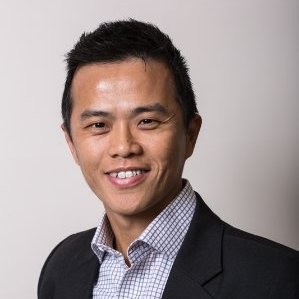
The forum heard from Raymond Goh Director of Systems Engineering – Asia & Japan at Veeam who spoke about combatting ransomware for safer and more resilient organisations with reliable protection.
Raymond opened by saying that the key objective in combatting ransomware is for organisations to not pay the ransom. Reliable ransomware protection is the last line of defence if all else fails. Keeping data safe with immutable and malware-safe storage repositories for backups and prevent malicious encryption and deletion is paramount.
This is the Cybersecurity Framework according to the National Institute of Standards and Technology (NIST):
- Identify: Data tagging
- Protect: 3-2-1-1-0 Rule Immutable storage SureBackup®, SureReplica
- Detect: Monitoring & alerts, data integration API
- Respond: Orchestration, SLA validation, dynamic documentation
- Secure: Secure, restore Item-level recovery, instant recovery, DataLabs
Raymond then spoke about a real-life use case in ransomware recovery. Most of the ransomware attacks are on the weekend where companies lost infrastructure and backup. Fortunately, in this specific use case, the customer was using object storage residing in the cloud. The attacks stopped from that point, and the data in the storage were not compromised.
Raymond recommended various tools to deal with ransomware, including Advanced Threat Protection (ATP), Windows Defender, security templates, remote access, training across the board, dedicated fabrics: backup targets, hosts, multi-factor authentication and zero trust model. The single most effective resiliency technique is to have some form of offline storage tape, a removable disk, etc. as an ultra-resilient copy.
In closing, Raymond gave the delegates several resources about ransomware and provided a QR code which leads to questions that delegates can answer. Then Veeam will give a detailed assessment of what their organisations need in ransomware protection.
Power Talk

After the informative presentations from the speakers, the session shifted to a Power Talk discussion where Mohit joined panellists, Bambang Dwi Anggono Director of eGovernment Ministry of Communication and Information Technology, Edwin Sugianto Chief Operating Officer & Chief Marketing Officer Mandiri AXA General Insurance, Klaus Felsche Senior Advisor OpenGov Asia, and Dr Leong Mun Kew Director Graduate Programmes Institute of Systems Science (ISS), National University of Singapore.
Bambang said that the situation in Indonesia is different than in many countries due to its large size and population. Before the pandemic, online solutions were not common among Indonesian government agencies, but the pandemic forced governments to move to online services quickly.
One of the big challenges to digital transformation is the lack of digital infrastructure as governments have not yet been able to provide internet in remote areas. However, Indonesia has earmarked a big budget in 2020 to make sure all remote areas are covered with the internet.
Edwin said that people are expecting everything online, and sometimes digital services do not always give satisfactory results as human contact is more powerful. Digital services need to be personalised and conversation-based as if people are facing real humans. When it comes to education, not all students have devices to face online solutions. Hence, governments provide subsidies to have internet access so they can access education websites freely.
Klaus gave an example of how COVID-19 accelerated a health programme in Australia. The government planned to deploy a telehealth programme in 10 years. Due to the pandemic, doctors did not want to see sick patients face-to-face so the programme was completed in only 8 months.
Rapid change is possible if people alter the way they think about project delivery and use agile methodology. Kalus recommended organisations build 80% of any particular project and fix the rest later. A perfect project will be useless if the outcome is too late.
Leong said that the tipping point came a lot earlier in online banking services. Traditional banks models are obsolete and embedded banking is a necessary part of the everyday process. The new normal has made the change obvious, but the change needs to be equal so remote areas can also access online services.
Interactive Discussion
After the informative presentations from renowned speakers, the forum moved to an interactive discussion – a time of high-level engagement with delegates from various government agencies, FSI, education and healthcare organisations.
Aided by polling questions, this session is designed to provide live-audience interaction, promote engagement, hear real-life experiences and impart professional learning and development for the participants. It is an opportunity for delegates to gain insight from subject matter experts, share their stories and take back strategies that can be implemented in their organisations.
The opening poll inquired about delegates’ primary objective in their digital transformation strategies. Close to half (48%) of the delegates said their digital transformation is meant to improve their business processes while 43% said it is for the improvement of citizen and customer experiences.
The next question was about the biggest challenges the delegates face in implementing digital strategies. Just under a third (32%) said that legacy systems and technologies that lack integration capabilities were the biggest challenges. About a quarter (28%) signalled that inflexible business processes and teams posed the biggest challenge.
Participants were asked how they measuring the success of their digital transformation efforts. Over half (60%) said that they are still looking for ways to measure it effectively while over a quarter (28%) indicated they already have qualitative and quantitative methods in place.
Delegates were then polled about their most important IT priorities. More than half (59%) said digital transformation and innovation are their top priorities while 37% said that improving efficiencies and reducing maintenance costs were the most pressing aspects of their IT strategies.
In terms of IT structures, delegates were asked how AI and Data Analytics impact or improve their current digital transformation strategies. More than half of the delegates said faster access to data to improve pre-emptive analysis can be achieved using AI and Data Analytics while 38% said that they need AI-ready infrastructures to manage large sets of data.
Participants were requested to share their organisations’ biggest pain points in the Big Data value chain. 41% of the delegates said data integrity was their biggest pain point while 33% said data accessibility and sharing were real problems for their organisations.
Regarding the maturity of their data strategies, 40% conceded that it was currently siloed with pockets of data all around the organisation. Over a quarter (26%) indicated that a traditional approach with a central team managing data with all the analytics drivers through their data warehouse.
When asked to rate their organisations’ use of data and data analytics tools for decision-making purposes, 43% said that it needed improvement and better tools to analyse while 33% said it was doing good and adequate tools were in place.
This led to delegates being asked how much of their organisations’ mission-critical/data-sensitive workloads are to be put onto public clouds this year. About 39% said that less than half of their workloads are set to be put onto the public cloud while 32% said more than half is earmarked for public cloud adoption.
On the issue of cloud adoption, delegates were asked about the biggest challenge CIOs face when complying with the government’s direction to go on the public cloud. Almost half (48%) agreed that security poses the biggest challenge, a fourth (23%) said governance was an issue while 15% said proper information dissemination and advisories from the government should be made for the digital migration to work.
Delegates were equally split over the main concern for security operations in their organisations. Votes were almost evenly divided among advance and zero-day attacks, difficulties in determining actual attacks due to noise, cybersecurity skills shortages, automating responses and actionable threat intelligence.
Respondents were asked to rate their current level of security operations efficiency to detect and respond to attacks. 44% said their security operations are currently based on log management, correlation aggregation and basic reporting, while 37% said it was very good in terms of a partial mapping of the prediction, detection and response areas, but needs improvement.
Delegates were polled on what drives their cyber resilience plans. More than half of the delegates said compliance and incidents were critical factors for their cybersecurity strategies and programmes.
With COVID-19 still making its presence felt in most parts of the world, the delegates were asked about the areas most impacted by the ongoing pandemic. Over 38% said the well-being of their staff took a hit, 35% said their productivity was greatly affected, while 27% said they were able to launch new initiatives because of COVID-19.
Knowing that the pandemic accelerated the digital transformation especially for the working sector, delegates were asked about their perceived outcomes of a digital and automated workplace. 45% believed that there will be higher productivity in the future. Other votes were divided into greater collaborations, greater digitalisation, improved employee engagement and resource savings.
On the current challenges they face in the adoption of a digital workplace, 44% said the lack of effective technologies to optimise staff productivity and performance is an issue. Over 38% said the lack of executive leadership to drive a culture of process improvement and effective change management is their biggest challenge. Only 18% said that no clear articulation of digital workplace benefits and a supporting business case hinder their adoption of the new working setup.
Lastly, the delegates were polled about their organisations’ capabilities in supporting a remote workforce. 42% said they already have the tools to implement a seamless remote working setup. 40% said there is a lack of collaboration tools for seamless remote work, but they are looking for solutions. Only 18% said they are not looking to implement a fully remote workforce.
Conclusion
The Indonesia OpenGov Leadership Forum – 2021 ended with a closing address from Mohit. He thanked the delegates, speakers and sponsors who joined the virtual session.
Mohit emphasised that governments in many countries do not utilise data to make informed decisions, but rely on sentiments. Therefore, data and the deployment of AI are necessary for digital transformation. Mohit believes that with the unprecedented pace government agencies and industries are tackling the effects of a global crisis, the world will soon return to its former self.
However, there will be a glaring difference. Going forward, government agencies, organisations, industries and communities are now more equipped with the appropriate knowledge and innovative capabilities that we all gained from our many battles with the COVID-19 pandemic.








